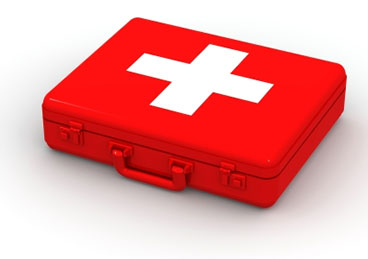Several weeks ago, our staff conducted one-on-one interviews with teens (ages 13 to 17) to hear their thoughts about two designs for a leaflet targeted to teens to raise awareness of sexually transmitted diseases. A fairly diverse group of eight teens participated. By age, one was a 13-year-old, two were 14-year-olds, two were 15-year-olds, two were 16-year-olds, and one was a 17-year-old. By race and ethnicity, two were African Americans, three were Caucasian Americans, and three were Hispanic Americans. By gender, representation was an even split—four females and four males.
Our goal was to find out which (if any) of the two leaflets these teens would pick up and read if they saw it someplace—which one was, in our minds, “cool enough.” So we asked them specific questions about the title, the cover designs, and the layouts including photos, colors, and font (type) styles. What we learned from them is not what we expected.
To prepare us to create the designs, we first read market studies on teens and media use. It was no surprise to us when we found in recent Center for Disease Control (CDC) and Nielsen studies that teens are drawn to new media (computers, cell phones, iphones, and the like). But we also found that teens are still drawn to traditional media (radio, TV, newspapers, and magazines). Our next step was to spend time in popular bookstores perusing magazines to find out what teens (ages 13 to 17) are picking up to read.
We noticed that the popular magazines targeted to teens had common characteristics in their “look and feel.” For example, photos were used generously—often as full-page spreads arranged in scrapbook patterns. Fonts were trendy and often bold, especially when used in headlines and subheadings. The most distinctive characteristic was the high saturation of bold background colors especially in text boxes. Bright and bold colors also were applied to segments of body text,especially in magazines for teen girls; the mood of the magazines can be described as fun, playful, and upbeat.
Based on what we found, we created two full-color magazine-style leaflets to be printed on glossy paper and folded to an 8 ½- by 11-inch finished size. One design was a slightly modified version of the other—having a brighter and more saturated background color. Each design included overlays of text boxes in various sizes, generous use of colors and trendy fonts, and stock photos of groups of playful teens, playful teen couples, and a teen with an adult.
The teens that we interviewed liked the title and the designs overall, but they expressed a strong dislike of certain aspects of the designs. To our surprise, what they disliked were what we thought were some of the “cool” aspects of the designs, such as the title in all lower case letters (they preferred a mix of upper and lower case), bright and saturated colors (they preferred light background colors for body text for easy reading), trendy fonts (they preferred some use of traditional fonts), and tabloid size or the option to fold the leaflet to a pocket size (they preferred a tri-fold because it’s what they’re used to).
Our biggest surprise was their strong disapproval of the stock photos of a boy and girl dancing together, and a boy touching the shoulder of a girl standing in front of a school locker. Their response was the boy and girl were “physically too close,” and the photos implied that something inappropriate might follow. They all said they were not comfortable having the boy and girl photos “of this type” presented to them in a leaflet produced by adults for teens. Who knew? Maybe the lesson is: we don’t need to be cool; we just need to be adults!

